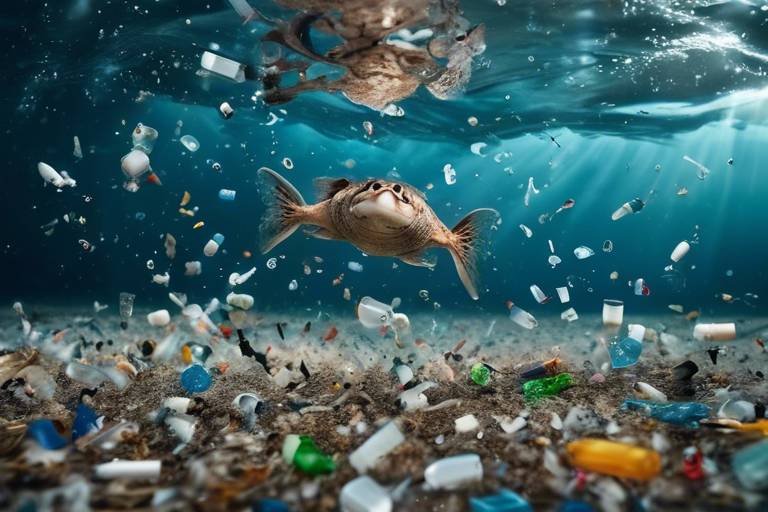Conserving Freshwater Biodiversity: A Matter of Life and Sustainability
Freshwater biodiversity is not just a fancy term thrown around by environmentalists; it represents the very essence of life on our planet. Imagine a world where rivers run dry, lakes become barren, and wetlands are nothing but memories. Scary, right? Well, that's the reality we face if we don't take action to conserve our freshwater ecosystems. Freshwater habitats, including rivers, lakes, and wetlands, are home to a myriad of species, many of which are unique and irreplaceable. These ecosystems provide essential services, such as clean drinking water, food, and recreation, making them crucial for human survival and well-being.
Moreover, these habitats play a vital role in regulating our climate and mitigating floods. They act as natural sponges, absorbing excess rainwater and releasing it slowly, which helps prevent devastating floods. Without healthy freshwater ecosystems, we risk losing not only the species that inhabit them but also the services they provide. The intricate web of life that depends on these waters is delicate, and every thread counts. By conserving freshwater biodiversity, we are essentially investing in our future—a future where both humans and wildlife can thrive.
As we delve deeper into this topic, we'll uncover the threats facing freshwater biodiversity, the importance of preserving these ecosystems, and effective strategies to ensure their survival. It's not just about saving fish or frogs; it's about maintaining the balance of our entire planet's ecosystem. So, buckle up as we embark on this journey to understand why conserving freshwater biodiversity is a matter of life and sustainability!
Freshwater ecosystems are vital for maintaining ecological balance, supporting diverse species, and providing essential services such as clean water and flood regulation. These ecosystems are not just pretty sights to behold; they are the lifeblood of both terrestrial and aquatic life. When we think about biodiversity, we often picture lush forests or vibrant coral reefs, but freshwater habitats are equally rich and diverse.
These ecosystems support countless species, from the tiniest microorganisms to majestic mammals. In fact, freshwater habitats house about 10% of all known species on Earth, despite covering only about 1% of the planet's surface. This astonishing statistic underscores the importance of protecting these habitats. Furthermore, they provide essential services that are fundamental to human life, such as:
- Water Supply: Freshwater ecosystems are crucial sources of drinking water for billions of people.
- Food Production: Many communities rely on freshwater fish and plants for their diets.
- Recreation: Lakes and rivers offer recreational opportunities, boosting local economies and enhancing quality of life.
- Climate Regulation: These ecosystems help regulate local climates and mitigate the impacts of climate change.
In essence, preserving freshwater biodiversity is not just an environmental issue; it is a matter of human survival. As we continue to exploit these resources, we must remember that our actions have consequences. The health of our freshwater ecosystems directly impacts our quality of life, making conservation efforts more critical than ever.
Various factors, including pollution, habitat destruction, climate change, and invasive species, pose significant threats to freshwater biodiversity, disrupting ecosystems and endangering species. It's like a ticking time bomb; every day, we see these threats escalate, and if we don't act soon, the consequences could be dire. Let's take a closer look at some of these threats.
Pollution from agricultural runoff, industrial discharges, and plastic waste severely affects water quality, harming aquatic life and reducing biodiversity in freshwater habitats. When we think about pollution, we often picture smoggy skies or littered beaches, but water pollution can be just as devastating—if not more so. The contaminants seep into our rivers and lakes, creating a toxic environment for fish, plants, and other wildlife.
Understanding the different types of pollutants is crucial for developing effective strategies to mitigate their impacts on freshwater ecosystems. The main types of pollutants include:
- Nutrients: Excessive fertilizers can lead to algal blooms, which deplete oxygen levels and kill aquatic life.
- Heavy Metals: Industrial waste can introduce toxic metals like mercury and lead into waterways, posing health risks to both humans and wildlife.
- Microplastics: Tiny plastic particles are pervasive in freshwater systems, harming organisms and entering the food chain.
Implementing restoration projects to clean polluted waterways can significantly improve biodiversity and ecosystem health, benefiting both wildlife and local communities. Think of it as a fresh start—a chance to heal the wounds inflicted by pollution. Restoration efforts can include:
- Removing invasive species
- Replanting native vegetation
- Improving water quality through filtration systems
By taking these steps, we can revitalize our freshwater ecosystems and restore the balance that has been disrupted.
Climate change alters temperature and precipitation patterns, impacting freshwater habitats and species distribution, highlighting the need for adaptive management strategies. As temperatures rise, many species find it increasingly difficult to survive in their natural habitats. Imagine trying to live in a place that is constantly changing—it's no wonder that many aquatic species are struggling to adapt.
Effective conservation strategies, including habitat protection, sustainable water management, and community engagement, are essential for preserving freshwater biodiversity and ensuring ecosystem resilience. It's not just about protecting the water; it's about creating a culture of conservation that resonates with everyone. By involving communities in these efforts, we can foster a sense of ownership and responsibility towards our natural resources.
Engaging local communities in conservation efforts fosters stewardship and promotes sustainable practices that benefit both biodiversity and human livelihoods. When people feel connected to their environment, they are more likely to take action to protect it. Think of it as a team effort—everyone plays a role in ensuring the health of our freshwater ecosystems.
Strong policies and legislation are necessary to protect freshwater ecosystems, regulate water use, and promote conservation initiatives at local, national, and global levels. It’s like having a safety net; without it, we risk losing the very resources that sustain us. Governments and organizations must work together to create robust frameworks that prioritize the health of our freshwater ecosystems.
Looking ahead, innovative approaches and collaborative efforts are crucial for addressing ongoing challenges and ensuring the long-term sustainability of freshwater biodiversity. We need to think outside the box and embrace new technologies and strategies that can help us monitor and protect these vital ecosystems. By working together, we can tackle the issues facing freshwater biodiversity and create a brighter future for both our planet and ourselves.
- What is freshwater biodiversity? Freshwater biodiversity refers to the variety of life found in freshwater ecosystems, including rivers, lakes, and wetlands.
- Why is freshwater biodiversity important? It plays a crucial role in maintaining ecological balance, providing clean water, food, and recreation, and regulating climate.
- What are the main threats to freshwater biodiversity? Major threats include pollution, habitat destruction, climate change, and invasive species.
- How can we help conserve freshwater biodiversity? You can help by reducing pollution, supporting conservation initiatives, and engaging in community efforts to protect local waterways.
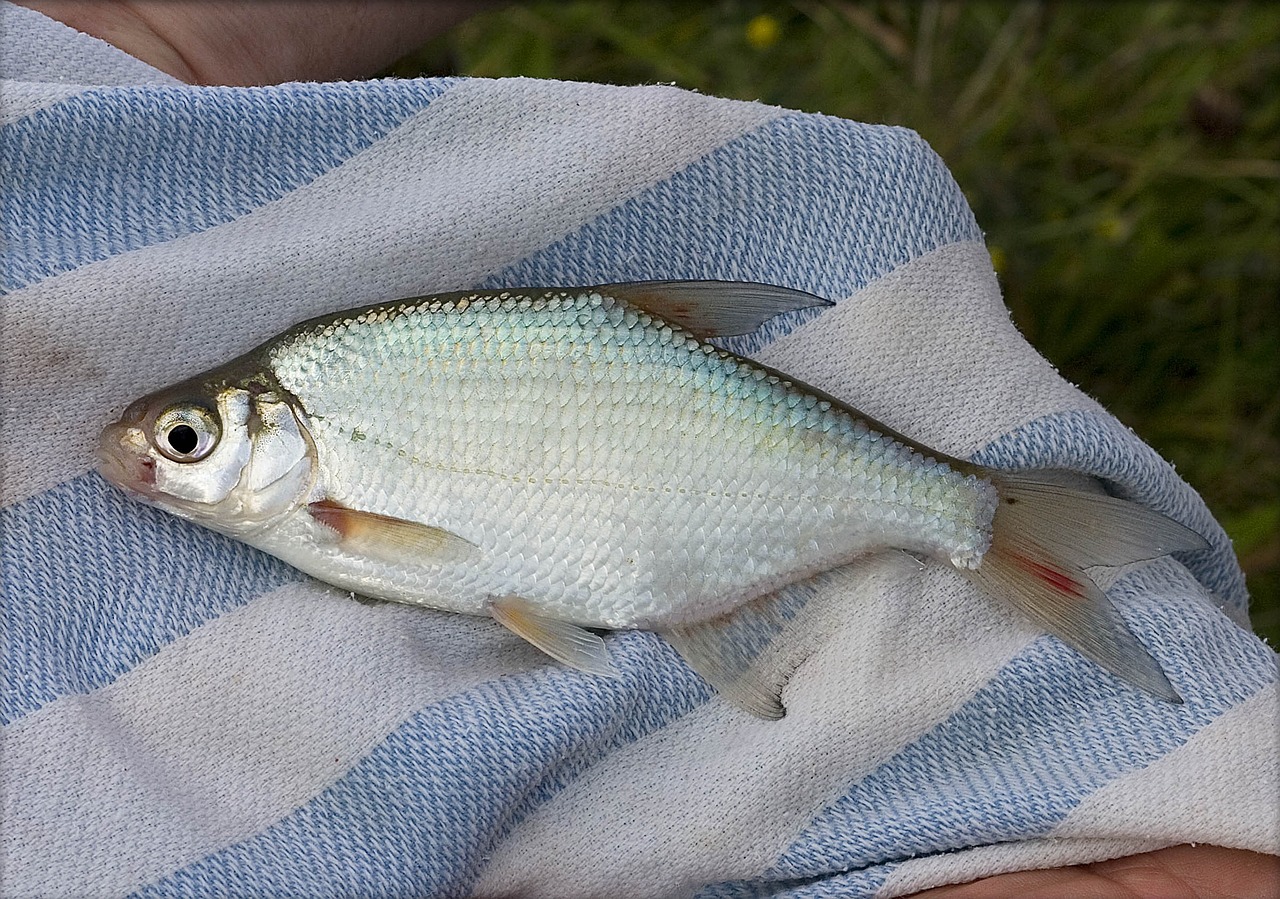
The Importance of Freshwater Biodiversity
Freshwater biodiversity is not just about the myriad of species that inhabit rivers, lakes, and wetlands; it’s the backbone of our planet’s ecological health. These ecosystems are like the lungs of the Earth, filtering water, supporting life, and maintaining ecological balance. Imagine a world without the vibrant colors of fish darting through streams or the serene presence of frogs croaking near a pond. It's hard to fathom, right? Freshwater ecosystems support over 100,000 species of animals and plants, providing essential services that we often take for granted.
One of the most crucial roles of freshwater biodiversity is its contribution to clean water supply. Healthy ecosystems filter pollutants and sediment, ensuring that the water we drink is safe and clean. Additionally, these systems help regulate floods by absorbing excess rainfall and slowly releasing it, acting like a sponge. This natural regulation is vital for protecting communities from devastating floods, which can lead to loss of life and property. Without the diverse species that inhabit these waters, this natural filtration and regulation would be severely compromised.
Moreover, freshwater biodiversity plays a significant role in supporting food security. Many communities rely on fish and other aquatic organisms as their primary source of protein. The decline of these species due to habitat destruction or pollution could lead to food shortages and economic instability. It’s a ripple effect; when one species suffers, it can impact entire food webs, leading to unforeseen consequences for both wildlife and humans.
Furthermore, freshwater ecosystems are critical for climate regulation. Wetlands, for instance, act as carbon sinks, absorbing carbon dioxide from the atmosphere and helping to mitigate climate change. They also provide habitats for numerous species, including migratory birds that depend on these areas for breeding and feeding. The loss of biodiversity in these ecosystems can lead to increased greenhouse gas emissions, exacerbating climate change and its associated impacts.
In summary, preserving freshwater biodiversity is not merely an environmental issue; it is a matter of life and sustainability. The intricate connections between species and their habitats create a web of life that supports not only the environment but also human existence. As we face increasing pressures from pollution, climate change, and habitat loss, the importance of protecting these vital ecosystems has never been clearer. We must recognize that our well-being is intertwined with the health of freshwater biodiversity, and taking action to safeguard it is essential for our future.
- Why is freshwater biodiversity important?
Freshwater biodiversity is crucial for maintaining healthy ecosystems that provide clean water, flood regulation, and food security. - What are the main threats to freshwater biodiversity?
Pollution, habitat destruction, climate change, and invasive species are the primary threats affecting freshwater ecosystems. - How can communities help conserve freshwater biodiversity?
Engaging in local conservation efforts, promoting sustainable practices, and supporting policies that protect freshwater ecosystems are essential steps communities can take.
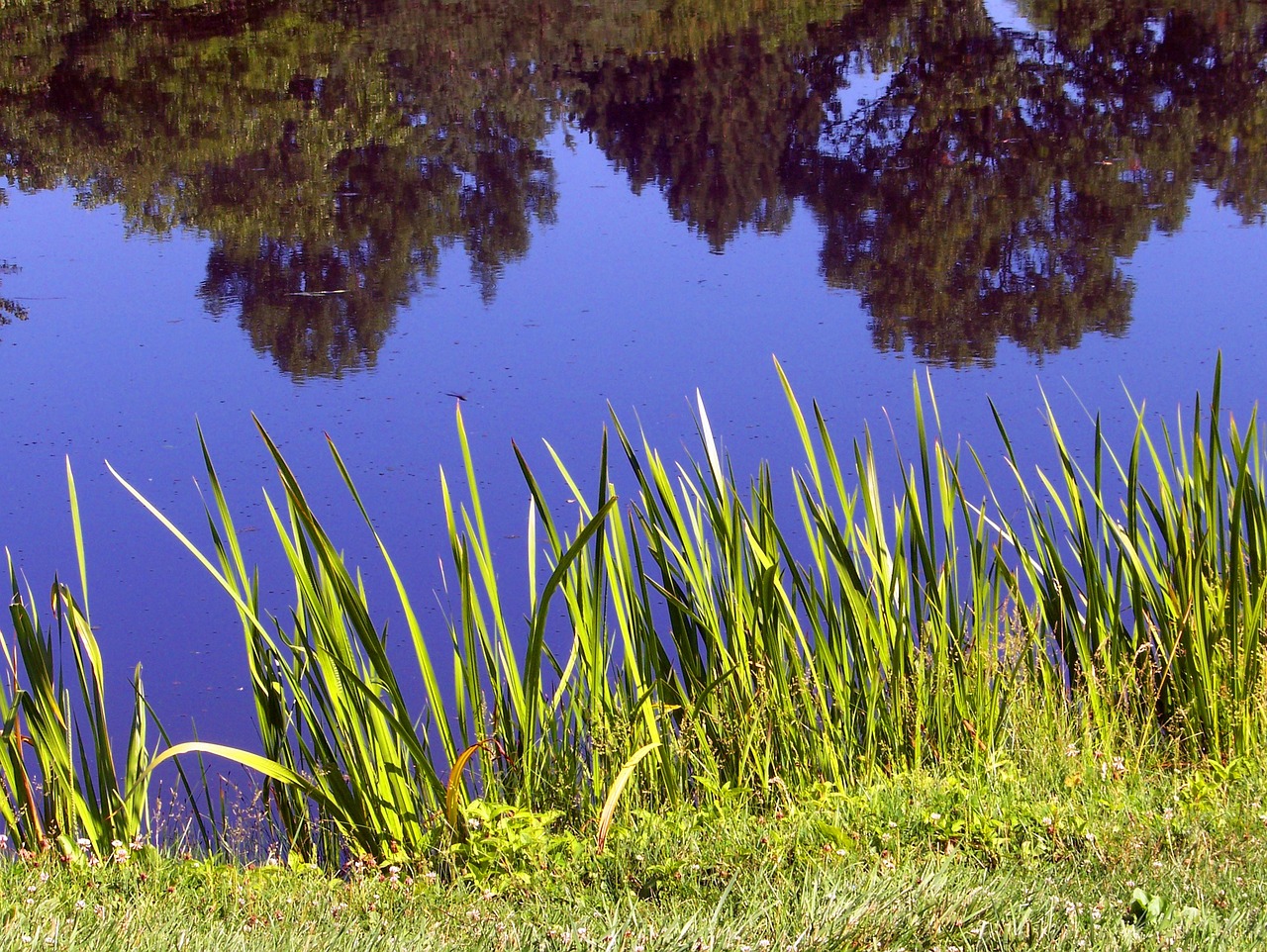
Threats to Freshwater Biodiversity
Freshwater biodiversity is under siege from a multitude of threats, each more insidious than the last. Imagine a vibrant underwater world teeming with life, where fish dart through crystal-clear waters, and plants sway gently with the current. Now picture that world slowly fading away, choked by pollution, fragmented by development, and altered by climate change. This is not just a metaphor; it's the harsh reality many freshwater ecosystems face today.
The primary culprits behind this decline can be categorized into several key areas: pollution, habitat destruction, climate change, and the encroachment of invasive species. Each of these factors contributes to a domino effect that disrupts the delicate balance of aquatic ecosystems. For instance, pollution not only degrades water quality but also creates a hostile environment for native species, pushing them towards extinction.
Pollution is like a slow poison that seeps into our waterways, often unnoticed until it's too late. From agricultural runoff laden with fertilizers and pesticides to industrial discharges that release heavy metals, the sources are numerous and often overwhelming. The result? Aquatic life suffers immensely. Fish populations dwindle, amphibians struggle to reproduce, and the entire food web is thrown into disarray. A recent study highlighted that nearly 40% of the world's freshwater species are now facing extinction due to pollution-related issues.
Understanding the different types of pollutants is crucial for developing effective strategies to combat their impacts. Here are some of the most common offenders:
- Nutrients: Excess nitrogen and phosphorus from fertilizers can lead to algal blooms, which deplete oxygen levels and create dead zones.
- Heavy Metals: Substances like mercury and lead can accumulate in the tissues of aquatic organisms, posing health risks to both wildlife and humans.
- Microplastics: Tiny plastic particles have infiltrated even the most remote freshwater systems, affecting fish and other aquatic life.
Fortunately, there is hope. Restoration projects aimed at cleaning polluted waterways can breathe new life into these ecosystems. By removing contaminants and restoring natural habitats, we can significantly improve biodiversity and ecosystem health. For example, initiatives that involve planting native vegetation along riverbanks can help filter pollutants while providing essential habitats for wildlife. The benefits extend beyond the environment; local communities can also thrive as healthier ecosystems lead to better fishing opportunities and improved water quality.
As if pollution weren't enough, climate change adds another layer of complexity to the threats facing freshwater biodiversity. Altered temperature and precipitation patterns can drastically impact habitats, affecting everything from fish migration patterns to the breeding cycles of amphibians. In some regions, prolonged droughts can lead to reduced water levels, while in others, increased rainfall can cause flooding, disrupting the delicate balance of these ecosystems. This shifting landscape underscores the urgent need for adaptive management strategies that can respond to these changes effectively.
In conclusion, the threats to freshwater biodiversity are both varied and serious, demanding our immediate attention. By understanding these challenges and taking proactive measures, we can work towards safeguarding these invaluable ecosystems for future generations.
1. What are the main threats to freshwater biodiversity?
The main threats include pollution, habitat destruction, climate change, and invasive species.
2. How does pollution affect freshwater ecosystems?
Pollution degrades water quality, harms aquatic life, and disrupts the balance of ecosystems.
3. What can be done to restore polluted waterways?
Restoration efforts can include removing contaminants, planting native vegetation, and improving land management practices.
4. Why is climate change a threat to freshwater biodiversity?
Climate change alters temperature and precipitation patterns, impacting species distribution and habitat viability.
5. How can communities get involved in conservation efforts?
Engaging local communities in conservation fosters stewardship and promotes sustainable practices that benefit both biodiversity and human livelihoods.

Pollution and Its Impact
Pollution is one of the most insidious threats to freshwater biodiversity, acting like a silent assassin that gradually erodes the health of our precious ecosystems. When we think of pollution, we often picture smokestacks belching out smoke or plastic bottles littering a beautiful lake. However, the reality is far more complex and alarming. Freshwater bodies are under siege from a variety of pollutants that can wreak havoc on aquatic life and the overall health of these ecosystems.
One of the primary culprits is agricultural runoff, which introduces harmful fertilizers and pesticides into rivers and lakes. These chemicals can lead to nutrient overloads, causing algal blooms that choke out sunlight and deplete oxygen levels in the water. This condition, known as eutrophication, can result in massive fish kills and the loss of biodiversity. Imagine a vibrant underwater garden, teeming with life, suddenly turning into a lifeless swamp. That’s the reality many freshwater ecosystems face today.
Additionally, industrial discharges contribute to the problem. Factories often release heavy metals and toxic substances into waterways, which can accumulate in the food chain and pose serious health risks to both wildlife and humans. For instance, fish that absorb these pollutants can become unsafe to eat, impacting local communities that rely on fishing for sustenance and income. It’s like a double-edged sword: the more we pollute, the more we jeopardize our own health and livelihoods.
Moreover, plastic waste has become a ubiquitous problem in freshwater systems. From microplastics to larger debris, plastic contamination has been found in even the most remote lakes and rivers. These materials can be ingested by aquatic organisms, leading to internal injuries and death. The impact is not just limited to wildlife; it also extends to the humans who consume these contaminated species. It's a vicious cycle that underscores the urgent need for action.
To better understand the various types of pollutants affecting freshwater ecosystems, consider the following table:
| Type of Pollutant | Source | Impact on Freshwater Biodiversity |
|---|---|---|
| Nutrients (e.g., nitrogen, phosphorus) | Agricultural runoff | Causes algal blooms and reduces oxygen levels |
| Heavy metals (e.g., mercury, lead) | Industrial discharges | Toxic to aquatic life and can bioaccumulate in food chains |
| Microplastics | Plastic waste | Ingested by organisms, leading to health issues and mortality |
Restoration efforts are crucial in combating these pollution effects. Implementing projects that focus on cleaning polluted waterways can significantly enhance biodiversity and ecosystem health. By removing contaminants and restoring natural habitats, we can create a healthier environment for both wildlife and local communities. Imagine a river once choked with waste, now flowing clear and clean, supporting a thriving array of flora and fauna. This vision is not just a dream; it's a possibility if we act decisively.
In conclusion, pollution poses a grave threat to freshwater biodiversity, and understanding its various forms is essential for developing effective conservation strategies. As stewards of the environment, we must take action to mitigate these impacts and restore our precious ecosystems for future generations. After all, a healthy planet means a healthy future for all living beings.
- What are the main sources of freshwater pollution? The main sources include agricultural runoff, industrial discharges, and plastic waste.
- How does pollution affect aquatic life? Pollution can lead to oxygen depletion, toxic accumulation, and habitat destruction, which threaten aquatic species.
- What can be done to reduce freshwater pollution? Implementing sustainable agricultural practices, reducing plastic use, and supporting restoration projects are effective strategies.
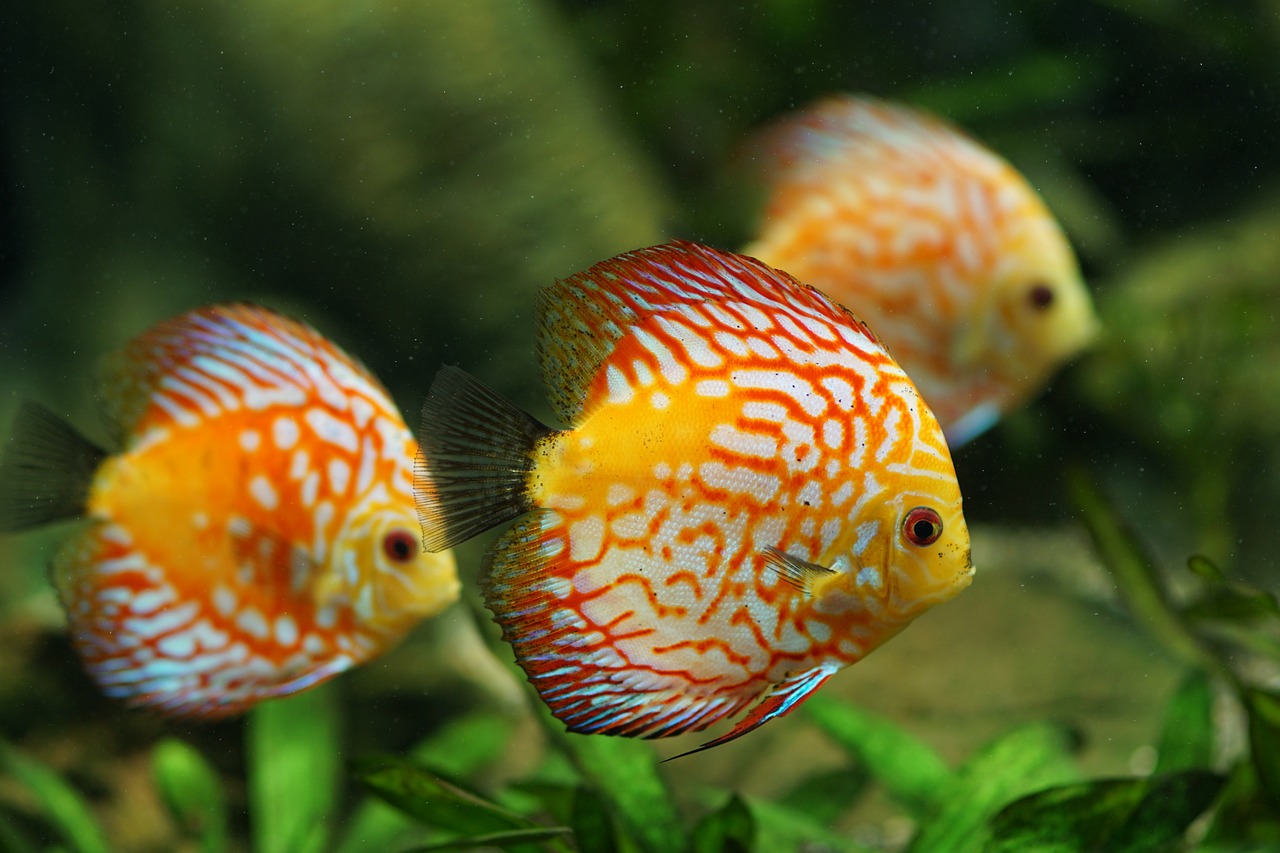
Types of Pollutants
Understanding the that threaten freshwater ecosystems is essential for developing effective conservation strategies. Pollution can come from various sources, and its impact on aquatic life can be devastating. Let's delve into some of the most common pollutants that compromise the health of our precious freshwater habitats.
First and foremost, nutrient pollution is a significant concern. This type of pollution often arises from agricultural runoff, where fertilizers rich in nitrogen and phosphorus wash into rivers and lakes. While these nutrients are vital for plant growth, excessive amounts can lead to eutrophication, a process that depletes oxygen in the water and creates dead zones where aquatic life cannot survive. Imagine a vibrant underwater garden turning into a barren wasteland, all because of an overload of nutrients!
Next, we have heavy metals, which can enter freshwater systems through industrial discharges, mining activities, or even urban runoff. Metals like lead, mercury, and cadmium are toxic to fish and other aquatic organisms, often leading to bioaccumulation in the food chain. This means that as smaller fish consume contaminated organisms, the toxins build up in their bodies, ultimately affecting larger predators, including humans. The implications are alarming, as these metals can cause serious health issues in both wildlife and people.
Another concerning category is microplastics. These tiny plastic particles result from the breakdown of larger plastic items and can be found everywhere, from remote lakes to bustling rivers. Microplastics are particularly insidious because they are easily ingested by aquatic organisms, leading to physical harm and potential toxic effects. They also serve as carriers for other harmful chemicals, compounding the problem. Picture fish swimming through a sea of tiny plastic particles, mistaking them for food—it's a grim reality!
In addition to these pollutants, we must also consider pathogens—disease-causing microorganisms that can enter freshwater systems through sewage discharge or runoff from livestock operations. These pathogens pose a direct threat to both aquatic life and human health, as contaminated water can lead to serious illnesses. It's akin to a hidden enemy lurking in the waters, waiting to strike unsuspecting swimmers or wildlife.
In summary, the types of pollutants affecting freshwater ecosystems are varied and complex. They can disrupt the delicate balance of aquatic habitats, leading to declines in biodiversity and ecosystem health. To combat these threats, we need to raise awareness and implement robust strategies to monitor and reduce pollution in our freshwater systems. By doing so, we can help ensure that future generations inherit a world rich in biodiversity and vibrant ecosystems.
- What are the main sources of freshwater pollution?
The main sources include agricultural runoff, industrial discharges, urban runoff, and sewage discharge. - How does nutrient pollution affect aquatic ecosystems?
Nutrient pollution can lead to eutrophication, resulting in oxygen depletion and dead zones where aquatic life cannot survive. - What are microplastics, and why are they a concern?
Microplastics are tiny plastic particles that can be ingested by aquatic organisms, causing physical harm and toxic effects. - How can communities help reduce freshwater pollution?
Communities can engage in clean-up efforts, advocate for better waste management practices, and support local conservation initiatives.
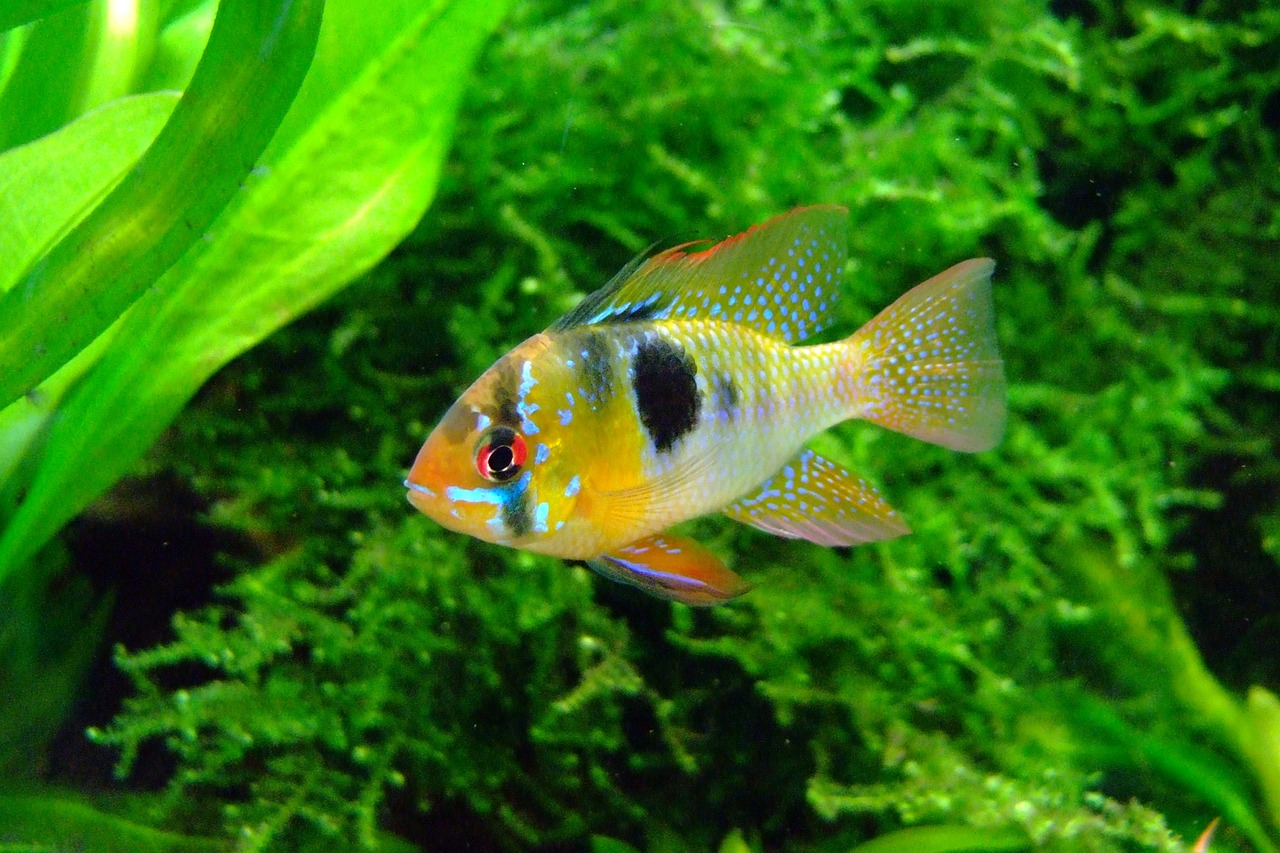
Restoration Efforts
Restoration efforts play a pivotal role in rejuvenating freshwater ecosystems that have suffered from degradation. When we think about restoring a river or lake, it's not just about cleaning up the water; it's about reviving entire ecosystems that support a myriad of life forms. Imagine a vibrant stream bustling with fish, frogs, and plants, where clean water flows freely. This vision can become a reality through dedicated restoration projects.
One effective approach to restoration is the removal of pollutants from affected waterways. This often involves comprehensive cleanup initiatives targeting various sources of contamination. For instance, community-led cleanups can mobilize local volunteers to collect trash and debris from riverbanks, while more extensive efforts might include the installation of filtration systems to reduce runoff from agricultural lands.
Moreover, rehabilitating natural habitats is equally crucial. This can involve restoring wetlands, which act as natural filters, absorbing excess nutrients and providing crucial habitat for wildlife. Wetlands are like the kidneys of our planet, filtering out harmful substances and providing a sanctuary for many species. By re-establishing these vital ecosystems, we can significantly improve water quality and enhance biodiversity.
Another aspect of restoration is the reintroduction of native species. When non-native species invade, they often outcompete local flora and fauna, leading to a decline in biodiversity. Restoration projects frequently include efforts to reintroduce native plants and animals, creating a balanced ecosystem that can thrive. For example, planting native aquatic vegetation can help stabilize shorelines, prevent erosion, and provide habitat for fish and other aquatic creatures.
To illustrate the impact of restoration efforts, consider the following table that summarizes some successful restoration projects:
| Project Name | Location | Key Restoration Activities | Results |
|---|---|---|---|
| Everglades Restoration | Florida, USA | Water flow management, habitat restoration | Improved water quality, increased wildlife populations |
| Thames River Cleanup | London, UK | Pollution control, bank restoration | Revitalized fish populations, cleaner recreational areas |
| Lake Erie Algal Bloom Reduction | Ohio, USA | Nutrient management, agricultural runoff reduction | Reduced harmful algal blooms, improved drinking water quality |
These examples highlight how restoration efforts can lead to remarkable improvements in freshwater ecosystems. However, it's important to note that restoration is not a one-time event but rather a continuous process that requires ongoing monitoring and management. Engaging local communities in these efforts is essential, as they often have the best understanding of the local environment and can contribute valuable insights.
In conclusion, restoration efforts are vital for the recovery and sustainability of freshwater ecosystems. By addressing pollution, rehabilitating habitats, and reintroducing native species, we can work towards a future where our freshwater resources are not only preserved but flourish. As stewards of the environment, it’s our responsibility to champion these initiatives, ensuring that future generations inherit a world rich in biodiversity and thriving ecosystems.
- What are the main goals of freshwater restoration efforts? The primary goals include improving water quality, restoring natural habitats, and reintroducing native species.
- How can individuals get involved in restoration projects? Individuals can volunteer for local cleanup events, participate in habitat restoration initiatives, or support organizations focused on freshwater conservation.
- What are some common pollutants affecting freshwater ecosystems? Common pollutants include agricultural runoff, heavy metals, plastics, and untreated sewage.
- Why is community involvement important in restoration efforts? Local communities possess valuable knowledge about their environment and can foster a sense of stewardship, leading to more sustainable practices.
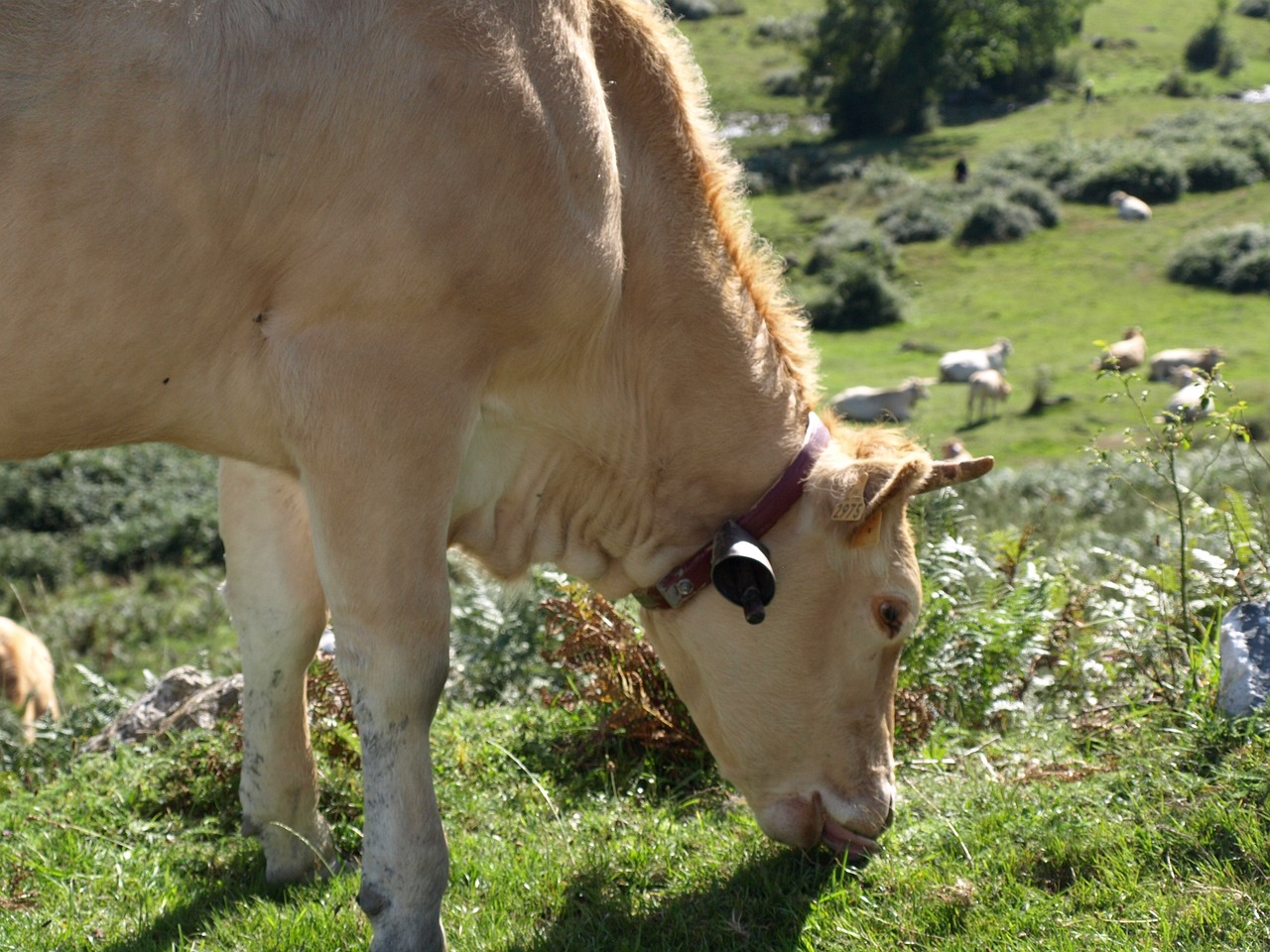
Climate Change Effects
Climate change is not just a distant threat; it’s a reality that is already reshaping our planet's ecosystems. The effects of climate change on freshwater biodiversity are profound and multifaceted. As temperatures rise, we’re witnessing shifts in rainfall patterns, with some regions experiencing devastating droughts while others are inundated with floods. This erratic weather disrupts the delicate balance of freshwater habitats, making it increasingly difficult for many species to thrive.
For instance, warmer temperatures can lead to increased evaporation, resulting in lower water levels in lakes and rivers. This not only stresses aquatic life but also alters the habitats that many species rely on for breeding and feeding. Fish, amphibians, and other aquatic organisms are particularly vulnerable to these changes, as they often have specific temperature and habitat requirements. When their environment shifts too dramatically, it can lead to population declines or even extinction.
Moreover, changes in precipitation patterns can lead to altered nutrient flows in freshwater ecosystems. For example, heavy rainfall can wash excess nutrients, like nitrogen and phosphorus, into water bodies, leading to eutrophication. This process causes algal blooms that deplete oxygen in the water, creating "dead zones" where most aquatic life cannot survive. On the flip side, drought conditions can reduce nutrient input, leading to poor water quality and a decline in biodiversity.
The impacts of climate change don’t stop at water quality and quantity; they also affect species distribution. As temperatures rise, many freshwater species are forced to migrate to cooler areas, often upstream or to higher altitudes. This movement can lead to increased competition for resources as species encounter new neighbors, some of which may be invasive and better adapted to the changing conditions. For instance, the introduction of non-native species can disrupt local ecosystems, leading to further declines in native biodiversity.
To illustrate the severity of these changes, consider the following table that summarizes the effects of climate change on freshwater ecosystems:
| Effect | Description |
|---|---|
| Temperature Increase | Warmer water temperatures affect species survival and reproduction rates. |
| Altered Precipitation | Changes in rainfall lead to flooding or drought, impacting habitat availability. |
| Nutrient Loading | Increased runoff during heavy rains can cause algal blooms, harming aquatic life. |
| Species Migration | Many species are forced to relocate, leading to increased competition and potential extinction. |
In conclusion, the effects of climate change on freshwater biodiversity are alarming and require urgent action. As stewards of the environment, we must recognize the interconnectedness of our actions and the health of our freshwater ecosystems. By understanding these impacts, we can begin to develop adaptive management strategies that not only protect biodiversity but also ensure the sustainability of these vital resources for future generations.
- What are the main causes of climate change? Climate change is primarily caused by human activities such as burning fossil fuels, deforestation, and industrial processes that increase greenhouse gas emissions.
- How does climate change affect freshwater ecosystems? Climate change leads to altered temperatures, precipitation patterns, and nutrient flows, which can harm aquatic life and disrupt ecosystems.
- What can be done to mitigate the effects of climate change on freshwater biodiversity? Effective strategies include habitat restoration, pollution reduction, sustainable water management, and community engagement in conservation efforts.
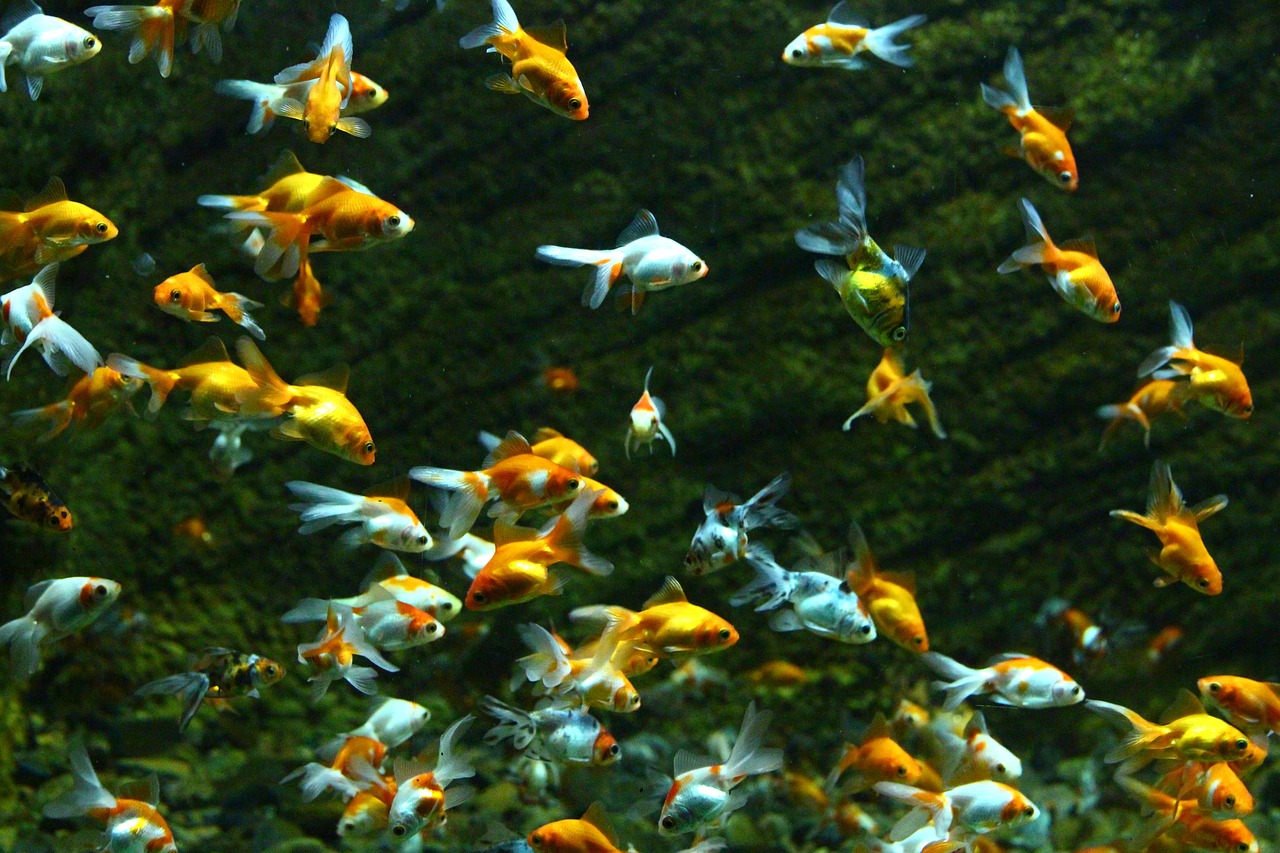
Conservation Strategies
When it comes to preserving our precious freshwater biodiversity, effective are not just essential; they are a lifeline. Imagine our ecosystems as intricate webs of life, where every species plays a unique role. If one strand is damaged, the entire web can unravel. This is why we need to adopt comprehensive strategies that encompass habitat protection, sustainable water management, and community involvement.
Habitat protection is the cornerstone of conservation. By safeguarding wetlands, rivers, and lakes, we create safe havens for countless species. These habitats not only support diverse wildlife but also provide critical ecosystem services, such as water purification and flood control. For instance, restoring riparian zones—areas adjacent to rivers and streams—can significantly enhance biodiversity. A healthy riparian zone acts like a sponge, absorbing excess nutrients and pollutants while providing shade and shelter for aquatic organisms.
Next, let’s talk about sustainable water management. Water is a finite resource, and how we manage it can make or break our freshwater ecosystems. Implementing practices like rainwater harvesting, efficient irrigation techniques, and wastewater recycling can significantly reduce the pressure on freshwater resources. Moreover, integrating these practices into agricultural systems can help farmers maintain productivity while protecting local waterways. It’s a win-win situation, where both nature and agriculture thrive.
But here’s the kicker: we can’t do this alone. Community engagement is crucial for the success of any conservation initiative. When local communities are involved in conservation efforts, they become stewards of their environment. This can take many forms, from organizing cleanup events to participating in citizen science projects that monitor local biodiversity. Engaging communities not only fosters a sense of ownership but also empowers individuals to adopt sustainable practices in their daily lives. After all, who knows the local environment better than the people who live there?
To illustrate the impact of community involvement, consider the example of the Lake Victoria Fisheries Organization. This initiative brought together local fishermen, scientists, and policymakers to develop sustainable fishing practices. By working collaboratively, they were able to restore fish populations and improve the livelihoods of local communities. This is just one example of how collective action can lead to meaningful change.
Furthermore, strong policies and legislation are necessary to protect freshwater ecosystems effectively. Governments play a pivotal role in regulating water use and promoting conservation initiatives. For example, implementing protective regulations for critical habitats and establishing conservation easements can provide long-term safeguards for biodiversity. It’s essential that these policies are backed by scientific research and community input to ensure they are both effective and equitable.
In conclusion, the path to conserving freshwater biodiversity is multifaceted and requires a combination of habitat protection, sustainable water management, and robust community engagement. As we move forward, let’s remember that every small action counts. Whether you’re a policymaker, a farmer, or a concerned citizen, your efforts can contribute to a healthier planet. Together, we can weave a brighter future for our freshwater ecosystems.
- What is freshwater biodiversity? Freshwater biodiversity refers to the variety of life forms found in freshwater ecosystems, including rivers, lakes, and wetlands.
- Why is freshwater biodiversity important? It plays a critical role in maintaining ecological balance, supporting food webs, and providing essential services like clean water and flood regulation.
- What are the main threats to freshwater biodiversity? Major threats include pollution, habitat destruction, climate change, and the introduction of invasive species.
- How can communities get involved in conservation efforts? Communities can participate in cleanup events, citizen science projects, and advocate for sustainable practices in their local areas.
- What role do policies play in freshwater conservation? Effective policies help regulate water use, protect critical habitats, and promote conservation initiatives at various levels of government.
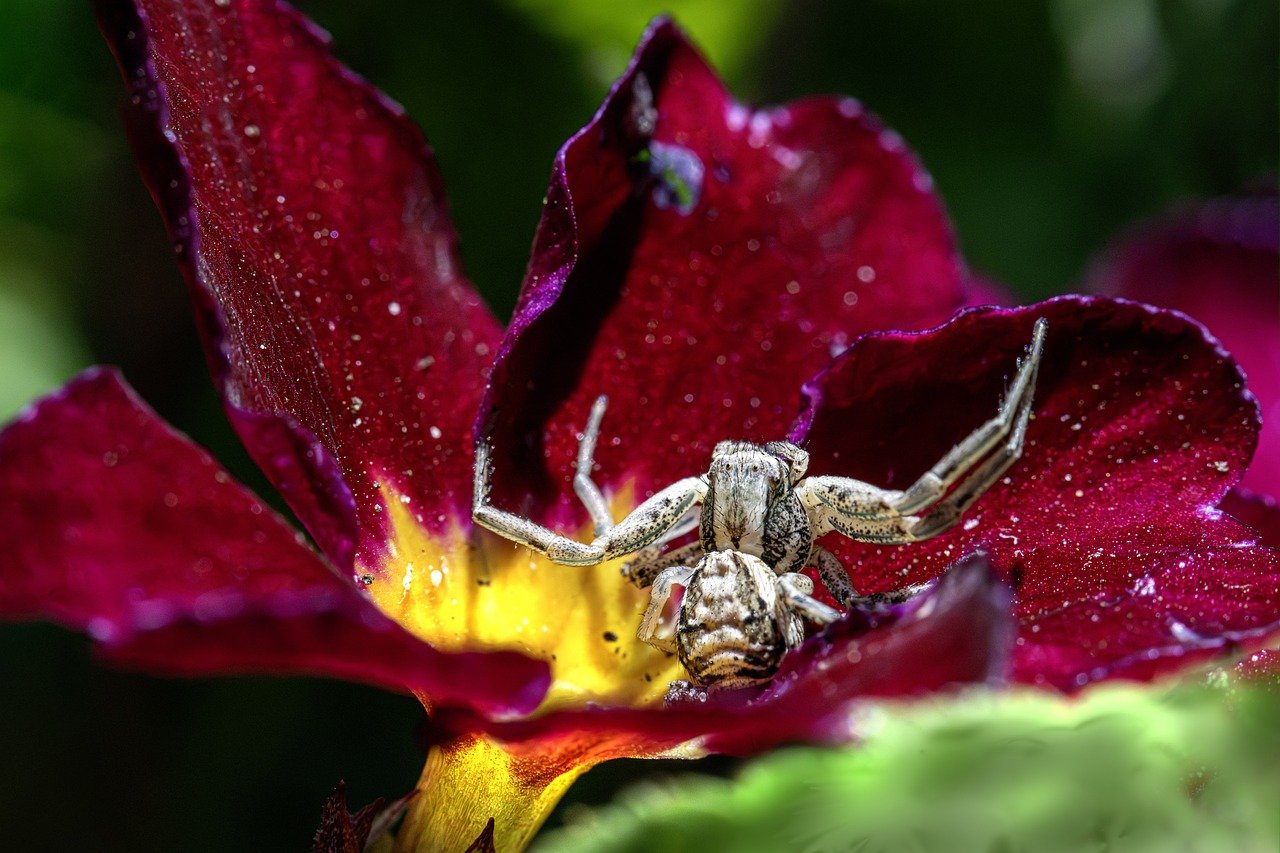
Community Involvement
When it comes to conserving freshwater biodiversity, community involvement is not just important; it's absolutely essential. Think of local communities as the front-line defenders of our precious water ecosystems. They are the ones who interact with these environments daily, and their insights can be invaluable. By actively engaging communities, we can foster a sense of stewardship that transforms individuals into passionate advocates for their local ecosystems.
One of the most effective ways to promote community involvement is through education and awareness programs. Imagine a local school organizing a field trip to a nearby river or wetland. Students learn about the unique species that inhabit these areas and the threats they face. This hands-on experience ignites a spark of curiosity and responsibility. When people understand the importance of their local ecosystems, they’re more likely to take action to protect them.
Moreover, community-driven conservation initiatives can yield significant results. For instance, local groups can organize clean-up days to remove trash from rivers and lakes, or they can monitor water quality to identify pollution sources. These actions not only improve the health of freshwater habitats but also strengthen community bonds. When people come together for a common cause, it fosters a sense of belonging and shared purpose.
Another effective strategy is to involve communities in decision-making processes related to water management. By giving people a voice, we empower them to advocate for sustainable practices that benefit both biodiversity and their own livelihoods. This can take the form of community forums, workshops, or even participatory planning sessions. When locals feel heard, they are more likely to support conservation initiatives and implement sustainable practices in their daily lives.
To illustrate the impact of community involvement, consider the following table that highlights successful case studies:
| Case Study | Location | Outcome |
|---|---|---|
| River Clean-Up Project | Springfield River, USA | Cleared over 2 tons of trash, improved local fish populations |
| Wetlands Restoration | Bayou Region, Louisiana | Reestablished native plant species, increased bird diversity |
| Water Quality Monitoring | Lake Victoria, Africa | Identified pollution sources, engaged local fishermen in conservation |
Ultimately, the success of conservation efforts hinges on the active participation of communities. By fostering a culture of involvement and responsibility, we can create a powerful movement that not only protects freshwater biodiversity but also enhances the quality of life for all community members. Together, we can ensure that future generations inherit vibrant and resilient ecosystems.
- Why is community involvement important for freshwater conservation?
Community involvement is crucial because local residents have firsthand knowledge of their ecosystems and can contribute significantly to conservation efforts. - How can individuals get involved in their local freshwater conservation efforts?
Individuals can participate in local clean-up events, volunteer for conservation organizations, or engage in educational programs to learn more about their local ecosystems. - What role does education play in community involvement?
Education raises awareness about the importance of freshwater ecosystems and empowers individuals to take action, fostering a sense of responsibility and stewardship.

Policy and Legislation
When it comes to conserving freshwater biodiversity, play a pivotal role. These frameworks are not just legal documents; they are the backbone of our environmental protection efforts. Strong policies can create a structured approach to managing water resources, regulating usage, and ensuring that conservation initiatives are not just well-intentioned but also effective. Think of policies as the rules of a game; without them, chaos reigns, and the delicate balance of our ecosystems can be easily disrupted.
Effective legislation can address numerous aspects of freshwater conservation, including:
- Water Quality Standards: Establishing limits on pollutants and ensuring that industries comply with these standards is crucial for maintaining healthy aquatic ecosystems.
- Protected Areas: Designating specific regions as protected can safeguard vital habitats from development and degradation.
- Water Use Regulations: Implementing guidelines on how much water can be extracted for agricultural, industrial, or personal use helps to prevent over-extraction and ensures sustainability.
Moreover, these policies often require collaboration among various stakeholders, including government agencies, local communities, and non-governmental organizations. This collaboration is essential for creating a comprehensive strategy that addresses the unique challenges faced by different freshwater ecosystems. For example, the Clean Water Act in the United States has been instrumental in regulating discharges of pollutants into navigable waters, thereby protecting aquatic life and enhancing biodiversity.
However, legislation alone isn’t enough. It must be coupled with effective enforcement mechanisms and public awareness campaigns. Imagine a world where laws exist, but no one knows about them or follows them. It would be like having a map without knowing how to read it! Therefore, educating communities about the importance of these laws and their role in conservation is just as critical as the laws themselves.
Furthermore, international cooperation is vital in addressing transboundary water issues. Many rivers and lakes cross national borders, making it imperative for countries to work together to manage these shared resources. Treaties and agreements, such as the Convention on Wetlands, facilitate this cooperation, ensuring that all parties are on the same page when it comes to protecting vital freshwater ecosystems.
In conclusion, robust policy and legislation are essential for the conservation of freshwater biodiversity. They provide the framework for protecting these invaluable ecosystems, guiding actions that can lead to sustainable management and ensuring that future generations inherit a thriving natural world. As we continue to face challenges such as climate change and pollution, it becomes increasingly important to advocate for strong policies that prioritize the health of our freshwater resources.
- What is freshwater biodiversity? Freshwater biodiversity refers to the variety of life found in freshwater ecosystems, including rivers, lakes, wetlands, and streams. It encompasses all living organisms, from fish and amphibians to plants and microorganisms.
- Why is freshwater biodiversity important? Freshwater biodiversity is crucial for maintaining ecological balance, providing clean water, regulating floods, and supporting human livelihoods through fishing, recreation, and tourism.
- What are the main threats to freshwater biodiversity? The primary threats include pollution, habitat destruction, climate change, and the introduction of invasive species, all of which can disrupt ecosystems and endanger native species.
- How can I get involved in freshwater conservation? You can participate by volunteering with local conservation organizations, advocating for strong policies, reducing your water usage, and educating others about the importance of protecting freshwater resources.
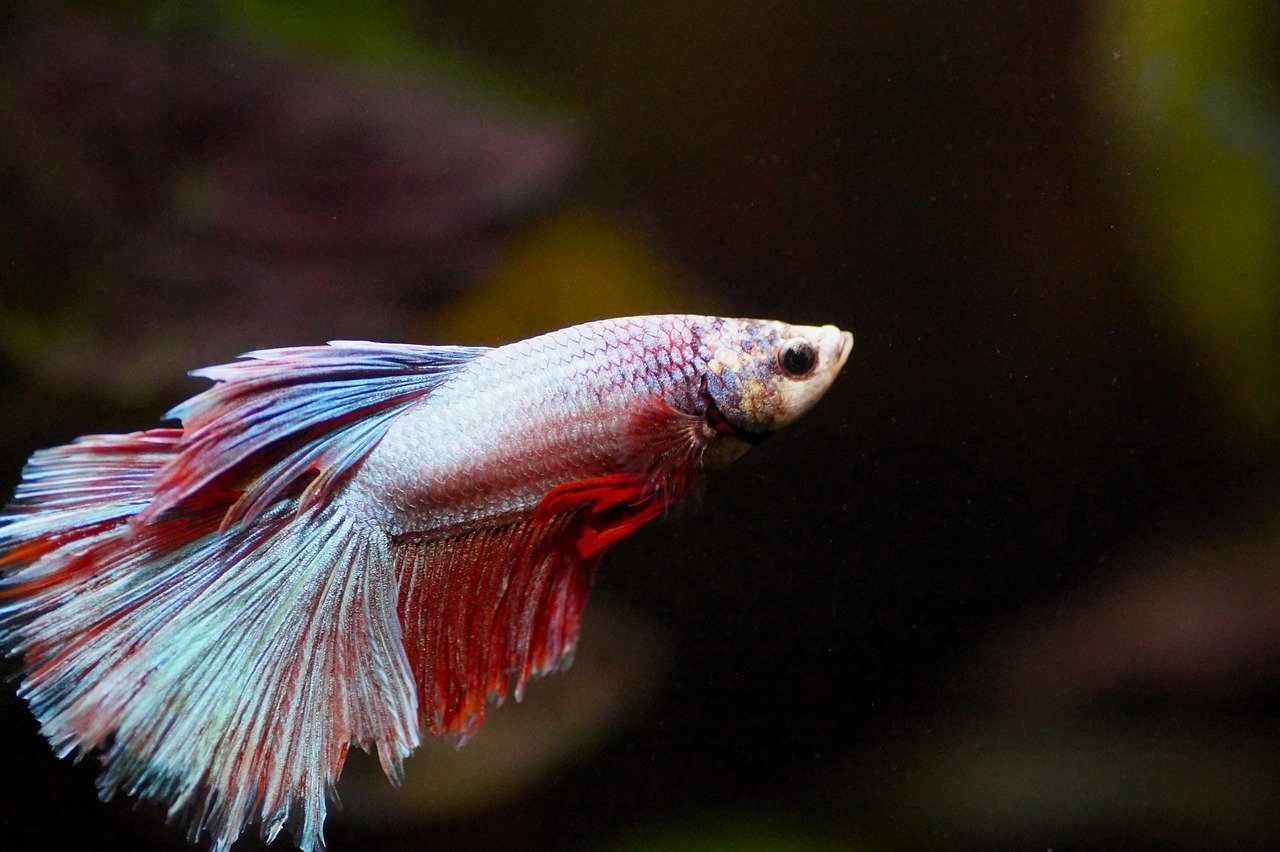
Future Directions for Conservation
As we gaze into the future of freshwater biodiversity conservation, it's clear that we must embrace innovative approaches and foster collaborative efforts to tackle the myriad challenges that lie ahead. The reality is that our freshwater ecosystems are under siege, and traditional methods alone won't suffice. We need to think outside the box and harness the power of technology, community engagement, and scientific research to pave the way for a more sustainable future.
One promising direction is the integration of technology into conservation strategies. For instance, the use of remote sensing and drone technology can provide invaluable data on water quality, habitat changes, and species populations. This data can help us make informed decisions and respond swiftly to emerging threats. Imagine being able to monitor a river's health in real-time, detecting pollution sources before they wreak havoc on aquatic life!
Moreover, community involvement is crucial. Engaging local communities not only fosters a sense of ownership but also encourages sustainable practices that can have a profound impact. When people understand the importance of preserving their local water bodies, they are more likely to take action. Initiatives like community-led clean-up days or educational workshops can empower individuals to become stewards of their environment. After all, who knows a river better than the people who live alongside it?
In addition to grassroots efforts, we must also advocate for robust policies and legislation that prioritize freshwater conservation. Governments play a pivotal role in shaping the future of our ecosystems. By implementing and enforcing regulations that protect water quality and habitat integrity, we can create a framework that supports sustainable practices. This involves not only local actions but also international cooperation, as many freshwater systems cross national boundaries.
Furthermore, we can't overlook the importance of scientific research and innovation. Investing in research that explores new conservation techniques, habitat restoration methods, and species recovery plans is essential. For example, scientists are developing bioremediation techniques that utilize plants and microorganisms to clean polluted waterways. These innovative solutions can significantly enhance our ability to restore and maintain healthy aquatic ecosystems.
To sum it up, the future of freshwater biodiversity conservation hinges on our ability to adapt and innovate. By embracing technology, engaging communities, advocating for strong policies, and investing in research, we can ensure that our freshwater ecosystems not only survive but thrive for generations to come. The journey ahead may be challenging, but with collective effort and determination, we can create a brighter future for our planet's invaluable freshwater resources.
- What are the main threats to freshwater biodiversity?
Freshwater biodiversity faces threats from pollution, habitat destruction, climate change, and invasive species. - How can communities get involved in conservation efforts?
Communities can participate in clean-up initiatives, educational programs, and advocacy for local conservation policies. - What role does technology play in freshwater conservation?
Technology aids in monitoring water quality, mapping habitats, and conducting research to inform conservation strategies. - Why is policy important for freshwater conservation?
Strong policies regulate water use, protect ecosystems, and promote sustainable practices at various levels of governance.
Frequently Asked Questions
- What is freshwater biodiversity and why is it important?
Freshwater biodiversity refers to the variety of life forms found in freshwater ecosystems, such as rivers, lakes, and wetlands. It's crucial because these ecosystems provide essential services like clean drinking water, flood regulation, and habitat for countless species. Without healthy freshwater biodiversity, our ecosystems can become unbalanced, leading to negative impacts on both wildlife and human communities.
- What are the main threats to freshwater biodiversity?
Freshwater biodiversity faces numerous threats, including pollution from agricultural runoff and industrial waste, habitat destruction due to urban development, climate change affecting temperature and rainfall patterns, and invasive species disrupting local ecosystems. Each of these factors can significantly harm aquatic life and reduce biodiversity.
- How does pollution affect freshwater ecosystems?
Pollution can severely impact freshwater ecosystems by degrading water quality and harming aquatic organisms. Nutrients from fertilizers can cause algal blooms, while heavy metals and plastics can poison wildlife. This pollution not only threatens species but also disrupts the entire ecosystem, leading to a loss of biodiversity and the services these ecosystems provide.
- What types of pollutants are most harmful to freshwater habitats?
Some of the most harmful pollutants include nutrients (like nitrogen and phosphorus), heavy metals (such as mercury and lead), and microplastics. Each of these pollutants can have devastating effects on aquatic life, leading to health issues for species and even altering the food web within these ecosystems.
- What are some effective conservation strategies for protecting freshwater biodiversity?
Effective conservation strategies include habitat protection, sustainable water management practices, and engaging local communities in conservation efforts. By protecting natural habitats and promoting responsible water use, we can help preserve freshwater biodiversity and ensure that ecosystems remain resilient to change.
- How can local communities get involved in freshwater conservation?
Local communities can play a vital role in freshwater conservation by participating in cleanup efforts, advocating for sustainable practices, and educating others about the importance of protecting freshwater ecosystems. When communities take ownership of their local environments, they foster stewardship that benefits both biodiversity and their own livelihoods.
- What role does policy and legislation play in freshwater conservation?
Strong policies and legislation are essential for protecting freshwater ecosystems. They help regulate water use, enforce pollution control measures, and promote conservation initiatives at various levels. Effective laws can lead to better management practices and ensure that freshwater resources are used sustainably for future generations.
- What does the future hold for freshwater biodiversity conservation?
The future of freshwater biodiversity conservation will likely involve innovative approaches and collaborative efforts among governments, organizations, and communities. Addressing ongoing challenges such as climate change and habitat loss will require adaptive management strategies and a commitment to preserving these vital ecosystems for the long term.





